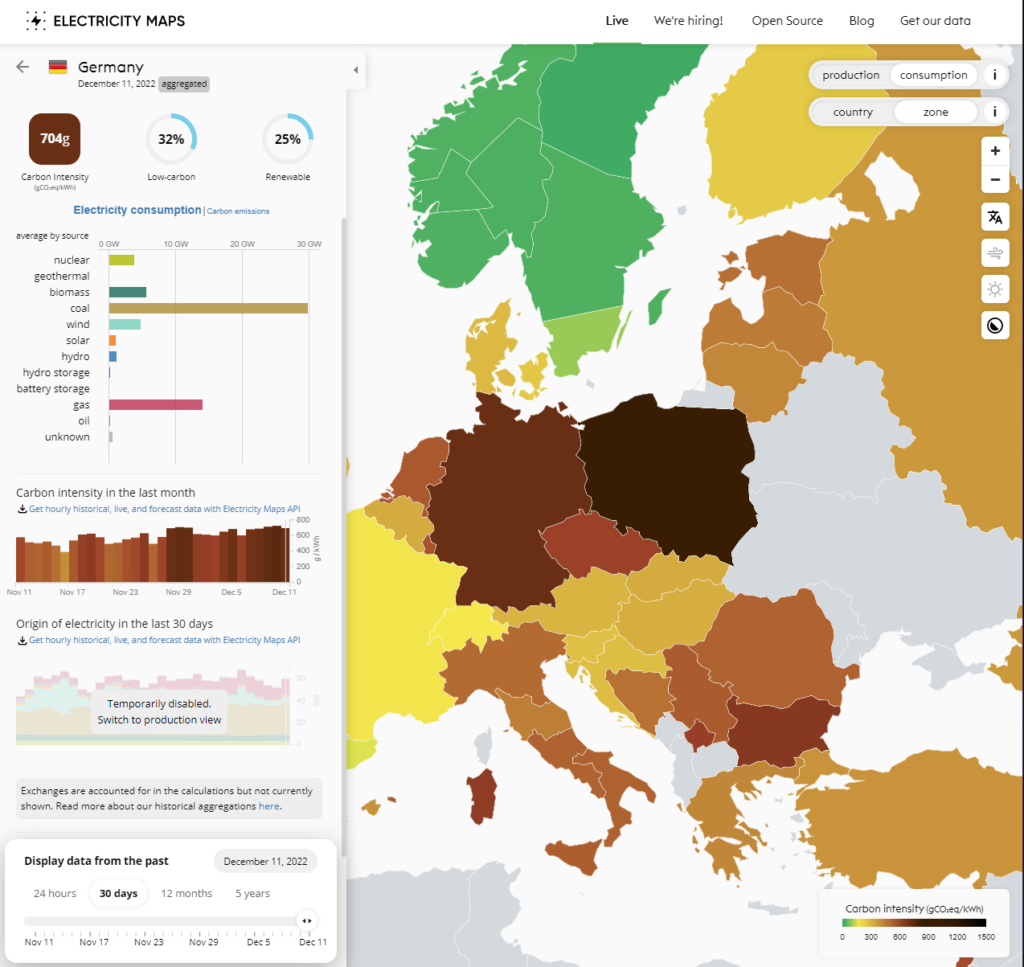Did you know that in 2021, coal accounted for 27% of the world’s primary energy which is higher than two decades ago, and about the same level as 50 years ago? We dive into the importance of Coal and how it will play an important role in the energy transition.
Be sure to also subscribe on Apple Podcasts via the link above and please leave us an honest rating and review. We read every one of them and sincerely appreciate any feedback you have. To ask us a question to be featured on an upcoming episode, please leave a comment below or send an email to feedback@mineralrightspodcast.com.
What is Coal?
Coal is a sedimentary deposit composed predominantly of carbon that is readily combustible. It is black or brownish-black, and has a composition that (including inherent moisture) consists of more than 50 percent by weight and more than 70 percent by volume of carbonaceous material. It is formed from plant remains that have been compacted, hardened, chemically altered, and metamorphosed by heat and pressure over geologic time.
Coal is found all over the world in places where prehistoric forests and marshes existed before being buried and compressed over millions of years. Some of the largest deposits are located in the Appalachian basin in the eastern U.S., the Illinois basin in the mid-continent region, and throughout numerous basins and coal fields in the western U.S. and Alaska.
According to the USGS, “there are four major types (or “ranks”) of coal. Rank refers to steps in a slow, natural process called “coalification,” during which buried plant matter changes into an ever denser, drier, more carbon-rich, and harder material. The four ranks are:
- Anthracite: The highest rank of coal. It is hard, brittle, and a lustrous black color, often referred to as hard coal, containing a high percentage of fixed carbon and a low percentage of volatile matter.
- Bituminous: Bituminous coal is a middle rank coal between subbituminous and anthracite. Bituminous coal usually has a high heating (Btu) value and is used in electricity generation and steel making in the United States. It is blocky and appears shiny and smooth when you first see it, but look closer and you might see it has thin, alternating, shiny and dull layers.
- Subbituminous: Subbituminous coal is black in color and is mainly dull (not shiny). Subbituminous coal has low-to-moderate heating values and is mainly used in electricity generation.
- Lignite: Lignite coal, aka brown coal, is the lowest grade coal with the least concentration of carbon. Lignite has a low heating value and a high moisture content and is mainly used in electricity generation.
The precursor to coal is peat. Peat is a soft, organic material consisting of partly decayed plant and mineral matter. When peat is placed under high pressure and heat, it undergoes physical and chemical changes (coalification) to become coal.” (What are the types of coal? | U.S. Geological Survey)
What is Coal Used For?
Coal is primarily used as fuel to generate electric power in the United States. In coal-fired power plants, bituminous, subbituminous coal, or lignite is burned. The heat produced by the combustion of the coal is used to convert water into high-pressure steam, which drives a turbine that is attached to a generator which produces electricity. According to the U.S. Energy Information Administration, in 2019 about 23 percent of all electricity in the United States was generated by coal-fired power plants, .
Certain types of bituminous coal can also be used in making steel. Coal used for steel making needs to be high in carbon content and low in moisture, ash, sulfur, and phosphorous content. Coal that meets these specifications is known as metallurgical coal. Coal also has a myriad of other uses, including in cement production, carbon fibers and foams, medicines, tars, synthetic petroleum-based fuels, and home and commercial heating.
The Importance of Coal in the Energy Transition
Coal plays an important role in the steelmaking process because coal is also used to produce coal coke, or coke, which is used in smelting iron ore to make steel.
According to the EIA: “Coke (coal): A solid carbonaceous residue derived from low-ash, low-sulfur bituminous coal from which the volatile constituents are driven off by baking in an oven at temperatures as high as 2,000 degrees Fahrenheit so that the fixed carbon and residual ash are fused together. Coke is used as a fuel and as a reducing agent in smelting iron ore in a blast furnace. Coke from coal is grey, hard, and porous and has a heating value of 24.8 million Btu per ton.”
U.S. Energy Information Administration
Coke is made by baking coking coal, also called metallurgical coal, in special high-temperature ovens to remove non-carbon elements and compounds. The resulting coke is mostly carbon. Coking coal must be low in sulfur and requires more thorough cleaning than coal used in power plants, which makes the coal more expensive.
In 2021, the average delivered price of coking coal to coke producers was about $122 per short ton—about 3.3 times higher than the average price of coal delivered to the electric power sector.
While it may not be obvious, metallurgical coal plays a significant role in our ability to scale all forms of energy. From natural gas, to solar and wind, to nuclear – all require a significant amount of steel to become reality. And, since coal is important to the steelmaking process, it will also be important to the energy transition. According to The Moral Case for Fossil Fuels by Alex Epstein, 542.3 tons of iron and steel is required per megawatt of installed wind power as compared to 5.2 tons of steel per megawatt of natural gas power. In either case, a lot of metallurgical coal will be required to meet future energy demands.
As we ramp up intermittent wind and solar power generating capacity, having reliable baseload power will become more important than ever.
Pros and Cons of Coal Usage
Which brings us to one of the benefits of coal fired power plants – their reliability.
Pros
- Coal fired power plants are reliable. Capacity factor of U.S. coal fired power plants was 49.3 in 2021. The capacity factor is the amount of electricity actually generated divided by the nameplate generation capacity. The highest was nuclear at 92.7% in 2021 and the lowest was solar PV power plants at 24.5%. Coal is roughly twice as reliable as solar but almost half as reliable as nuclear.
- One of the reasons for the reliability of coal in power generation is due to the fact that these types of power plants are resilient to cold temperatures. Since coal can be stored in large quantities at power plants, this minimizes the risk of a supply disruption as compared to natural gas which is expensive to store.
- Coal is relatively easy to transport via rail, waterway, or truck.
- Coal has a relatively high energy density. The energy density of coal is approximately 50-75% that of crude oil. Energy density refers to the amount of heat released during combustion. Crude oil and natural gas have an energy density of around 45 million Joules per kilogram and coal is around 24 million Joules per kilogram. The reality is that fossil fuels have a much higher energy density than solar which comes in at around 30 quadrillion times lower than oil. To put that in perspective, natural uranium in a normal reactor produces around 500 Billion Joules per kilogram – more than ten thousand times the energy density of crude oil.
Cons
- Can have a large environmental footprint during mining process with strip mining which is the source of arount 64% of the coal mined in the U.S. in 2020. The largest surface mines are located int he Powder River Basin in Wyoming.
- Expensive to transport. The average transportation cost of coal in 2020 was $13.96/ton which was 15.7% of the average delivered cost of coal ( $36.89/ton).
- If underground mines are not properly closed then acidic water can drain from them.
- Burning coal emits toxic compounds such as Sulfur dioxide (SO2), Nitrogen oxides (NOx), particulates, and mercury.
- To combat these toxic emissions, power plants use scrubbers to clean sulfur from the smoke before it leaves the smokestack. There are also technologies that exist that remove impurities from coal to make it cleaner burning.
- Coal also emits CO2 when it is burned which is seen as one of the primary gases responsible for global warming. To combat this, companies have been able to capture the CO2 from the flue gases and recovers it in concentrated stream to inject or sequester permanently underground. This is called carbon capture and sequestration or CCS and is receiving a lot of attention and funding at the moment. We talk about carbon capture in more detail in episode 99. One benefit of capturing CO2 this way is that coal power plants near oil fields can be a source of CO2 for enhanced oil recovery through a process called CO2 flooding which helps extract more oil out of a conventional oil reservoir.
What Country Used the Most Coal in 2021
Source IEA: Global coal consumption by region, 2000-2021 – Charts – Data & Statistics – IEA
How Has the Energy Crisis Affected Coal Usage?
With the energy transition beginning, my impression was that global coal usage would be on the decline. Instead according to Bloomberg’s Javier Blas: “last year, coal accounted for 27% of the world’s primary energy, a couple of percentage points higher than two decades ago, and about the same level as 50 years ago.”
While coal prices haven’t been immune to the pandemic and Russia’s invasion of Ukraine, it is still relatively cheap .
China dominates global coal production and usage. From China to India and even Europe, coal demand is up and so are plans to mine. According to a report published in 2021, the world’s coal producers are planning more than 430 new mines with 2.28 billion tonnes of annual production capacity.
Europe too, for all its green ambitions, is now turning back to coal as the reliable, secure bridge to its energy future as it scrambles to disentangle itself from Russian energy. Coal consumption in the European Union is expected to rise by 7% this year on top of last year’s 14% jump. France, Italy, Austria and the Netherlands have all announced plans to reactivate shuttered coal power plants. But, as The Washington Post Reported, nowhere is the pivot to coal as extensive as in Germany, which is allowing 21 coal plants to restart or work past planned closing dates.

Proof that reliability is more important than carbon credits, Germany now relies on coal as it’s largest source of fuel for generating electricity.
Resources Mentioned in This Episode
- Coal Is Still King of the Energy System: Elements by Javier Blas
- Global Coal Use is on the Rise
- World’s coal producers now planning more than 400 new mines
- A Comparison of Energy Densities of Prevalent Energy Sources in Units of Joules per cubic meter
- Coal and the environment – U.S. Energy Information Administration (EIA)
- MRP 99: Carbon Capture and Enhanced Oil Recovery
- MRP 102: Would a Carbon Tax Be Bad for Mineral Owners?
- MRP 114: The Dark Side of the Energy Transition and the ESG Movement
- MRP 171: How Long Will the Energy Transition Take?
Thanks for Listening!
To share your thoughts:
- Leave a comment or question below (we read each one and your question may be featured in a future episode)!
- Ask a question or leave us feedback via email.
To help out the show:
Click the Apple Podcasts Logo Above to leave us a rating & review. It really helps us reach those that need to hear this information and only takes a minute. We greatly appreciate it! Plus, you can get a shout out on a future episode!
Thanks again – until next time!




